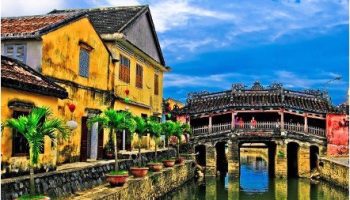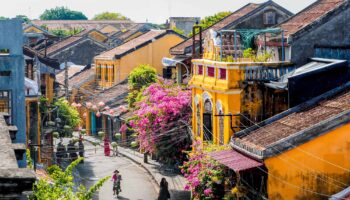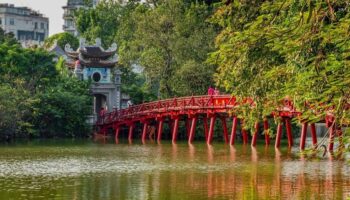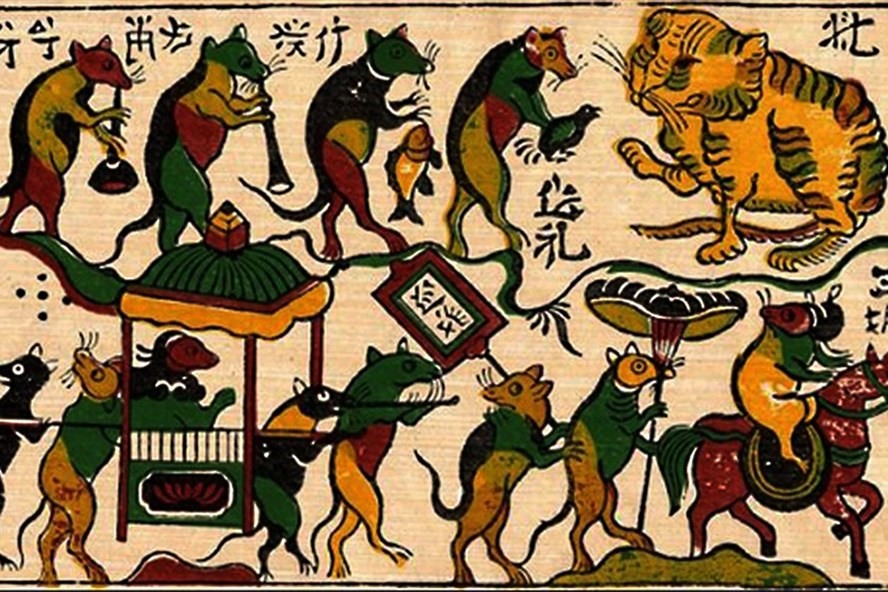
Exploring the Cultural Elegance of Vietnamese Arts and Crafts
Vietnam arts and crafts are not just a way of expression but an integrated part of the country’s essence. From the intricate details of Vietnamese silk embroidery to the age-old techniques of traditional Vietnamese crafts, the artistic legacy reflects stories that surround the nation. Exploring the various characteristics of Vietnamese arts and crafts to help you understand the significance that defines the country’s essence.
Table of Contents
ToggleHistorical Influences on Vietnamese Arts and Crafts
Comprehending Vietnamese arts and crafts begins with a look at the layers of the nation’s history. It is traced back thousands of years and influenced by various dynasties. Fusing cultural practices with foreign influences has also led to the development of a distinctively interesting Vietnamese art history.
In addition, traditional crafts were often created to support daily life and thus, they innately embody spiritual, beliefs and cultural meanings. This historical effect provides a foundation for the rich tapestry of Vietnamese arts and crafts.

Historical Layers
Vietnamese art history is developed from the first ancient civilizations that settled along the Red River Delta. Then through time, the notable dynasties like the Hùng Kings to the Nguyễn Dynasty, integrated the customs that shape the identity of Vietnamese art.
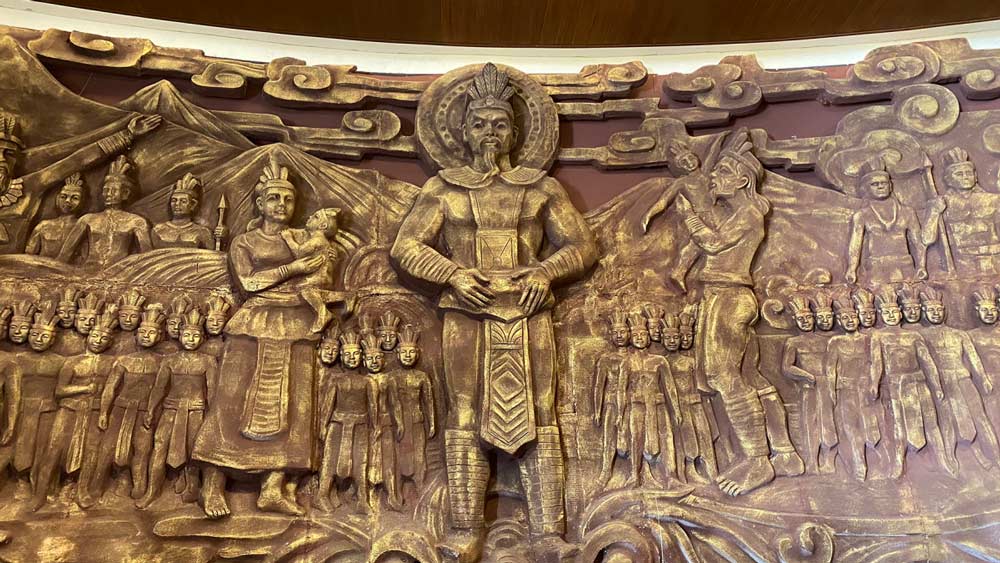
Foreign Influences
Impacts from the history of invasion with China and France influenced Vietnamese art where new techniques and styles were introduced and then blended with local traditions, showcasing the nation’s adaptability and creativity.
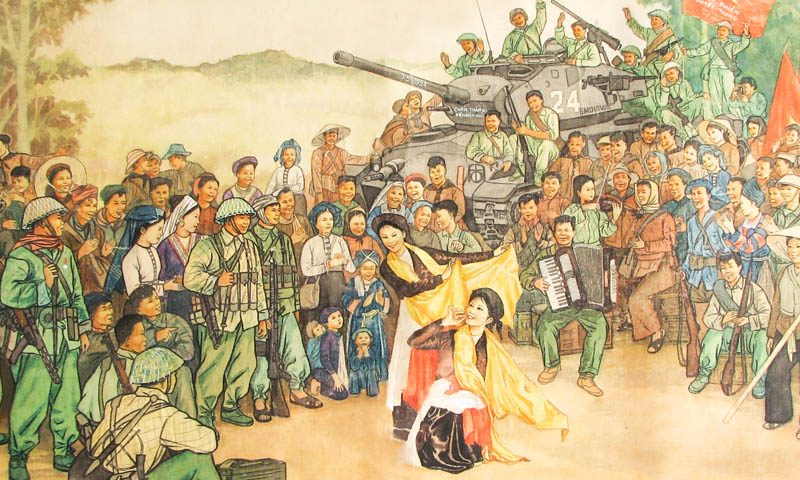
Functional and Symbolic Role
Traditional crafts served both practical and ceremonial purposes to tell stories of cultural, spiritual, and values. It often features symbolic designs that communicate cultural beliefs and values, linking each piece of art to the values of the people who created it.
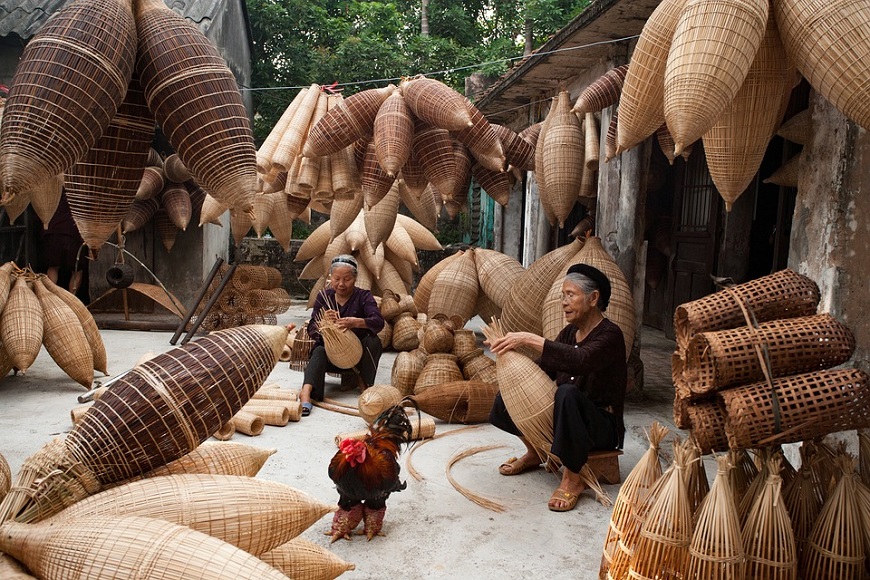
Excellent Craftsmanship of Vietnamese Arts and Crafts
Vietnamese Silk Embroidery Art
The most elegant representation of this nation’s beauty is the Vietnamese silk embroidery art. It is a meticulous craft that involves many steps that require a high level of skill and dedication. The first step in creating Vietnamese silk embroidery is sourcing high-quality silk fabric as it impacts the texture and visual appeal of the finished embroidery.
Top sources for excellent silk are from renowned regions like Hoi An or the Van Phuc village. With the perfect material, the artisan then can truly shine and employ several stitching techniques, such as satin, chain or cross-stitch. Each stitch is applied with precision, as the quality of stitching can significantly affect the final product. Each master piece of embroidery can take weeks to complete depending on the complexity of the design.
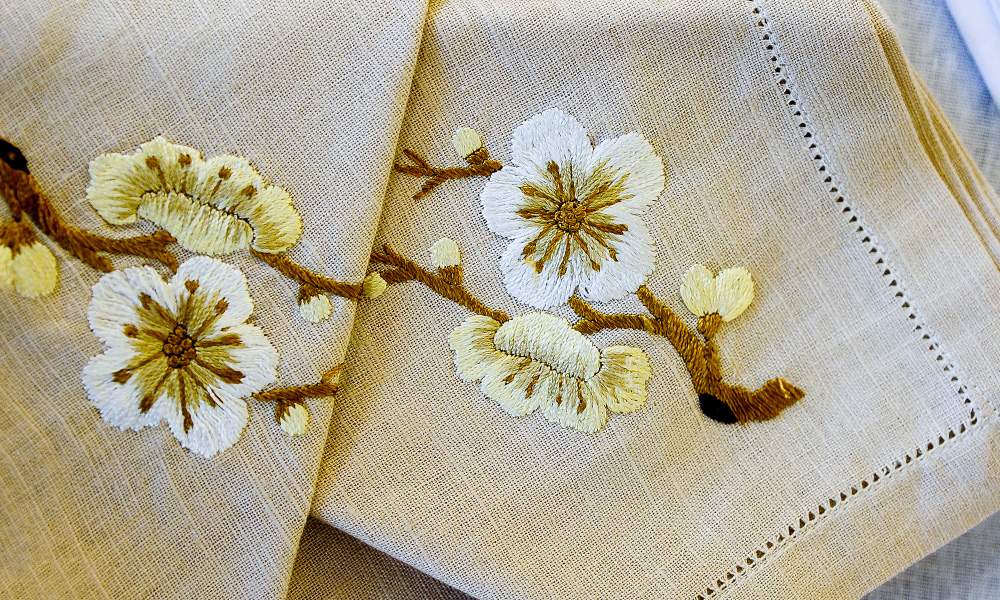
Vietnamese Embroidery Paintings
As an extension of silk embroidery art, embroidery paintings are an interesting combination of textile and visual art. These paintings feature complex patterns, transforming fabric into beautiful, framed artworks with stories. Many artisans belong to families with a long history of embroidery, passing down techniques through generations. There are two main factors that made up this extraordinary craft:
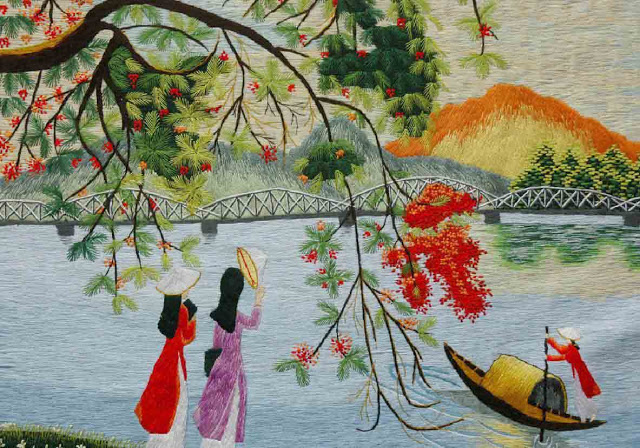
Raised threads
Uniquely creates a three-dimensional effect, inviting viewers to engage not only visually but also through touch, making the experience of viewing the artwork more immersive.
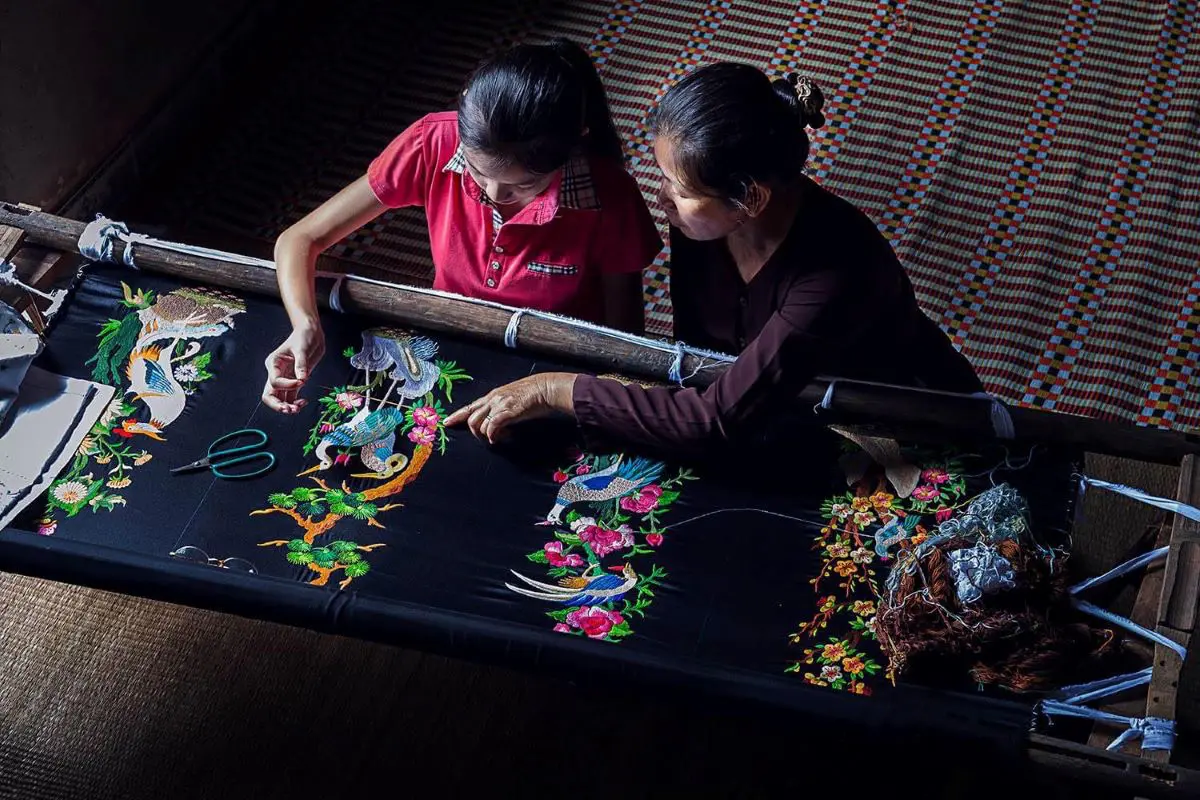
Textures
Artists use multiple layers of thread to create shading and depth, adding to the textile surface. By blending colors and textures, many intricate details can be brought to life vibrantly.
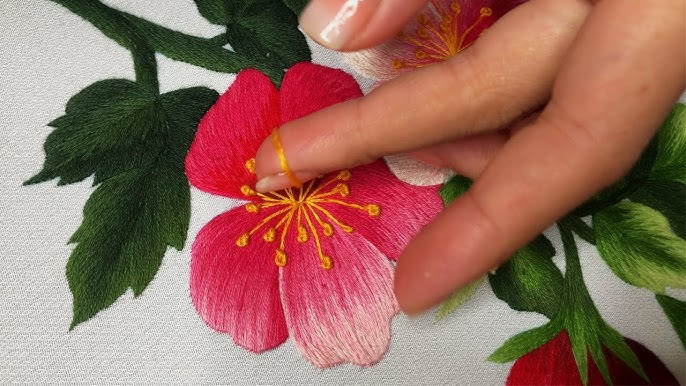
Lacquerware
Lacquerware is deeply rooted in Vietnamese culture, often used in decoration and special occasions, reflecting the elegance and life of the nation. You can see this form of craft in everyday items such as trays, vases, and decorative boxes. The intricate designs often incorporate mother-of-pearl inlays, showcasing the artisans’ exceptional craftsmanship. The creation of lacquerware can take several weeks to months, as each layer needs to dry completely before the next is applied.
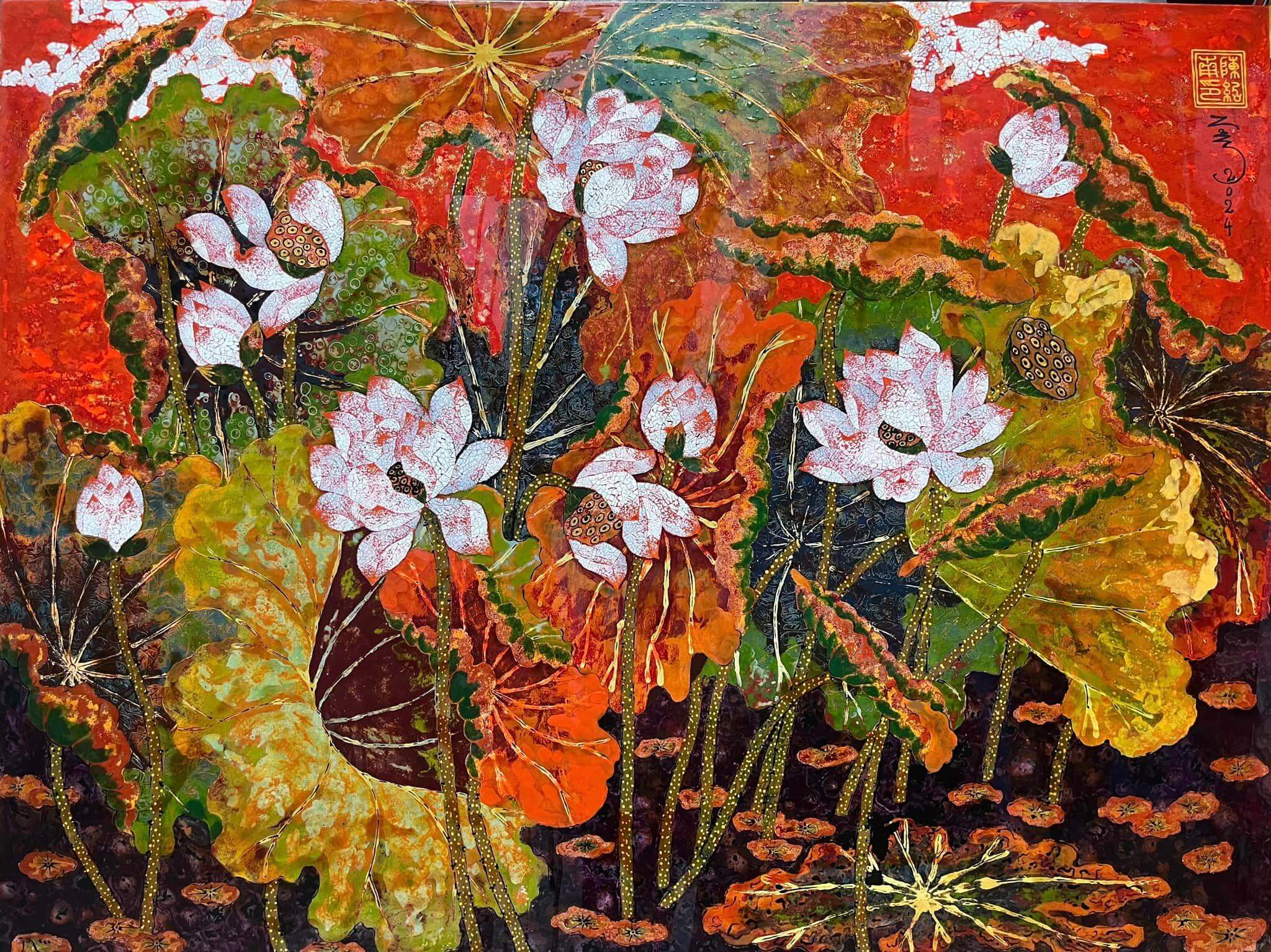
Surface Preparation
First and foremost crucial step that is meticulously prepared through sanding and smoothing to ensure an even application of lacquer.
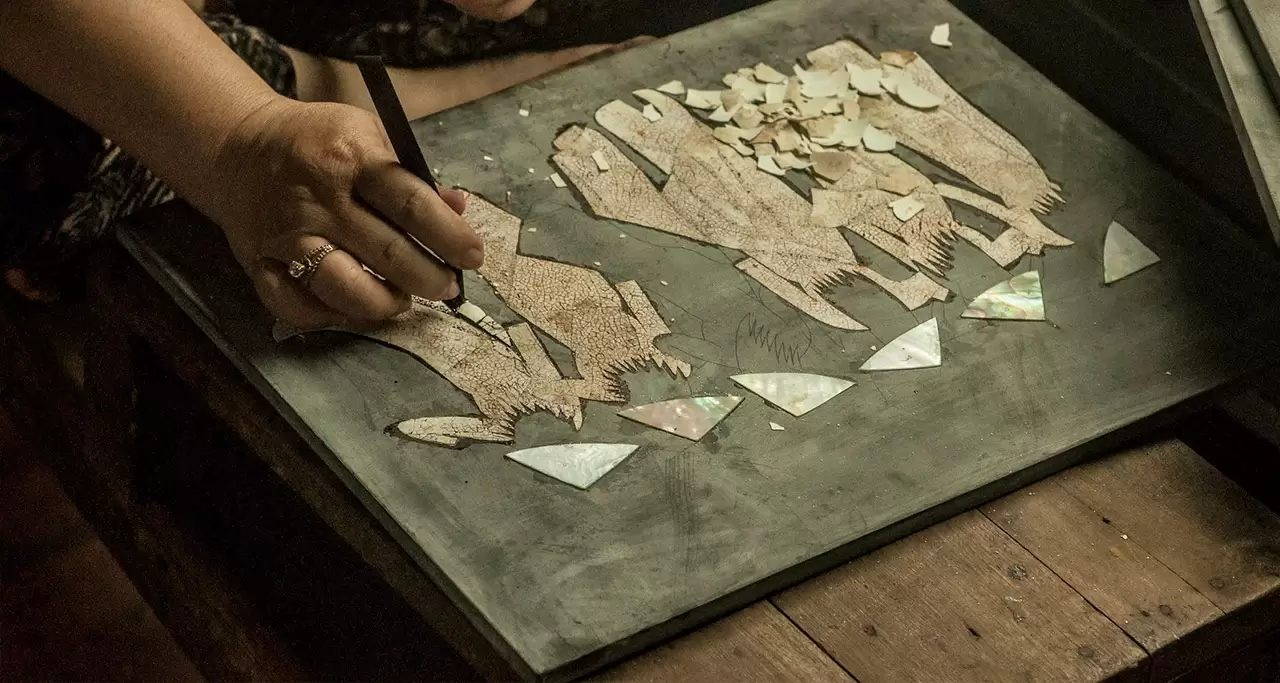
Layering Process
Artisans apply multiple layers of natural lacquer to a wooden or bamboo base with about 15-20 layers, contributing to the item’s durability and glossy finish.
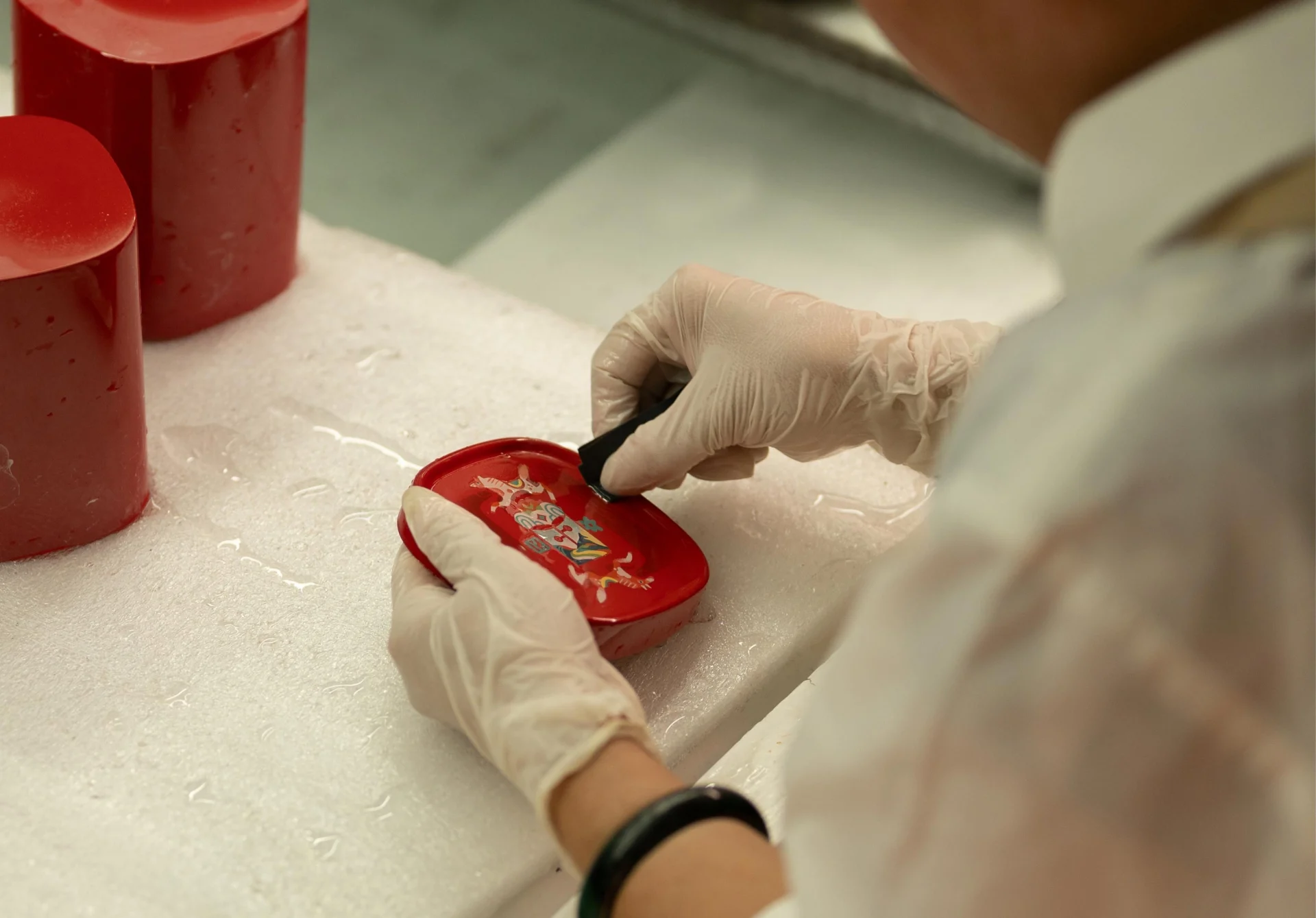
Inlay Techniques
One of the most distinctive features of Vietnamese lacquerware is the intricate inlays, particularly pearls or egg shells. Artisans skillfully cut and shape pieces of the selected material to create stunning designs that are embedded into the lacquer.
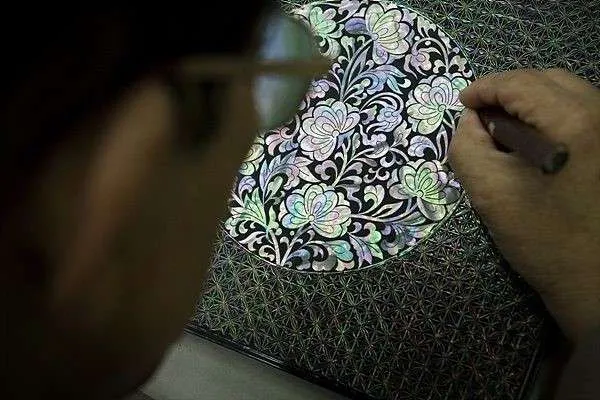
Pottery and Ceramics
Vietnamese pottery and ceramics is the soul of artisan towns of Thanh Ha and Bat Trang. The art form there creates everything from decorative pieces, reflecting local customs and artistic styles. The unique glazes and motifs found in these ceramics tell stories of the regions they come from, creating a bridge between the past and present.
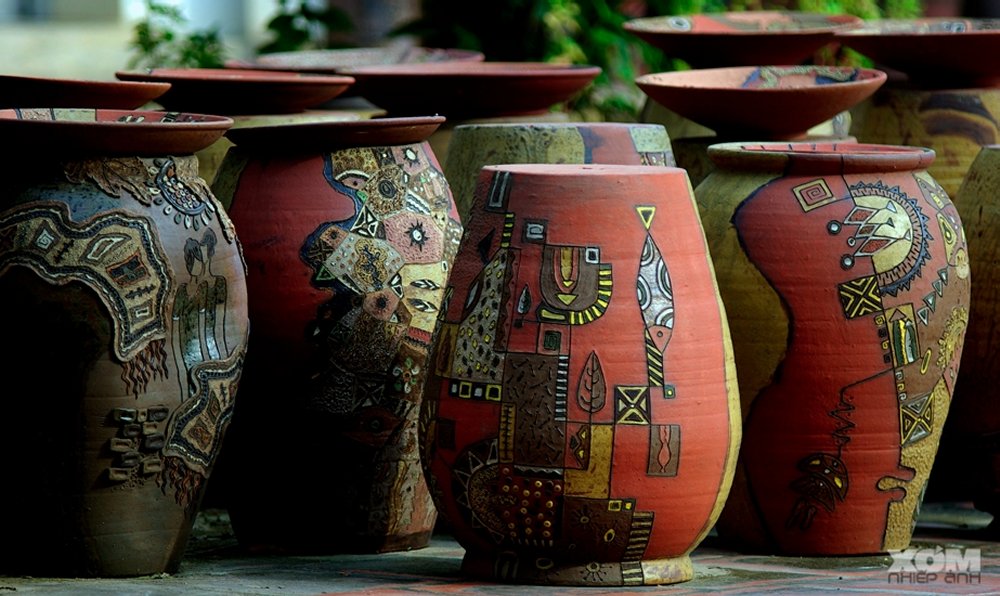
Clay Preparation
The foundation of quality ceramics is the preparation of clay, which is sourced locally. Different types of clay are used to achieve specific textures and colors, contributing to the uniqueness of each piece.
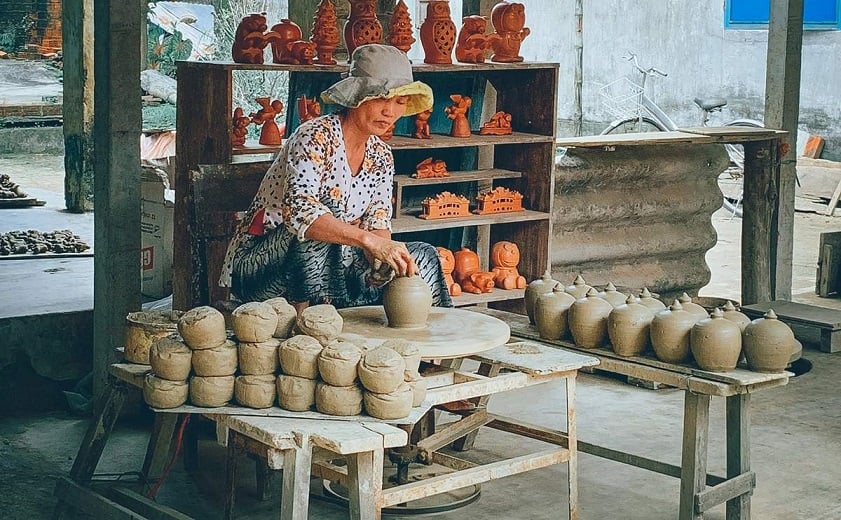
Forming Techniques
A mixture of hand-throwing on a potter’s wheel and hand-building techniques, such as coiling and pinching, influenced the final form and texture of the pottery.
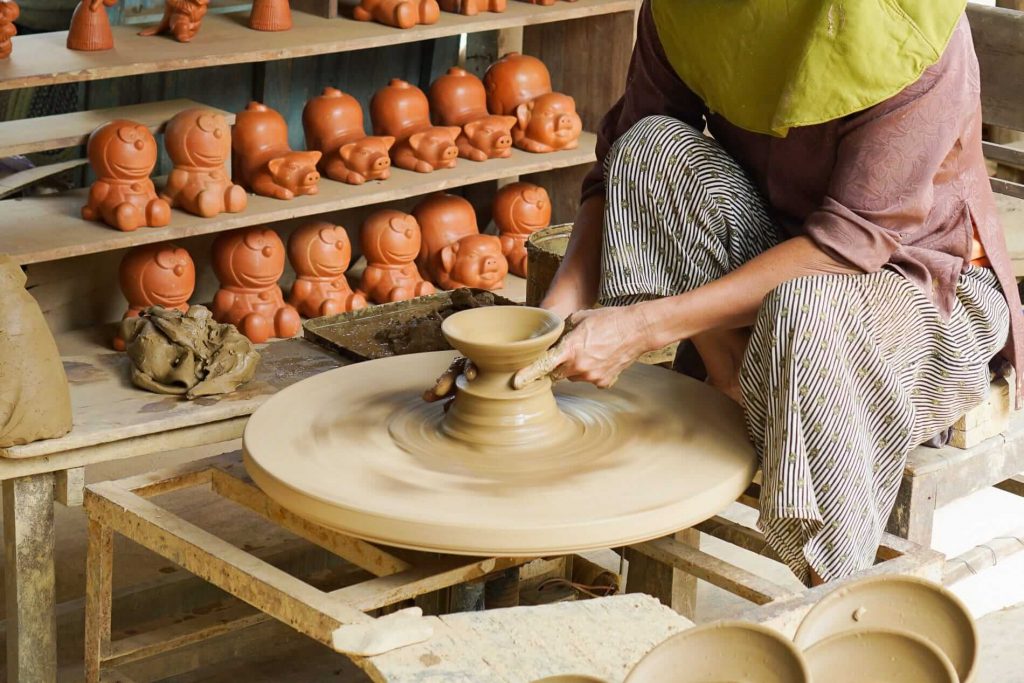
Glazing Techniques
The application of glazes is a key step of Vietnamese ceramics, providing both color and protection. Traditional glazes may contain natural minerals and oxides, leading to vibrant colors.
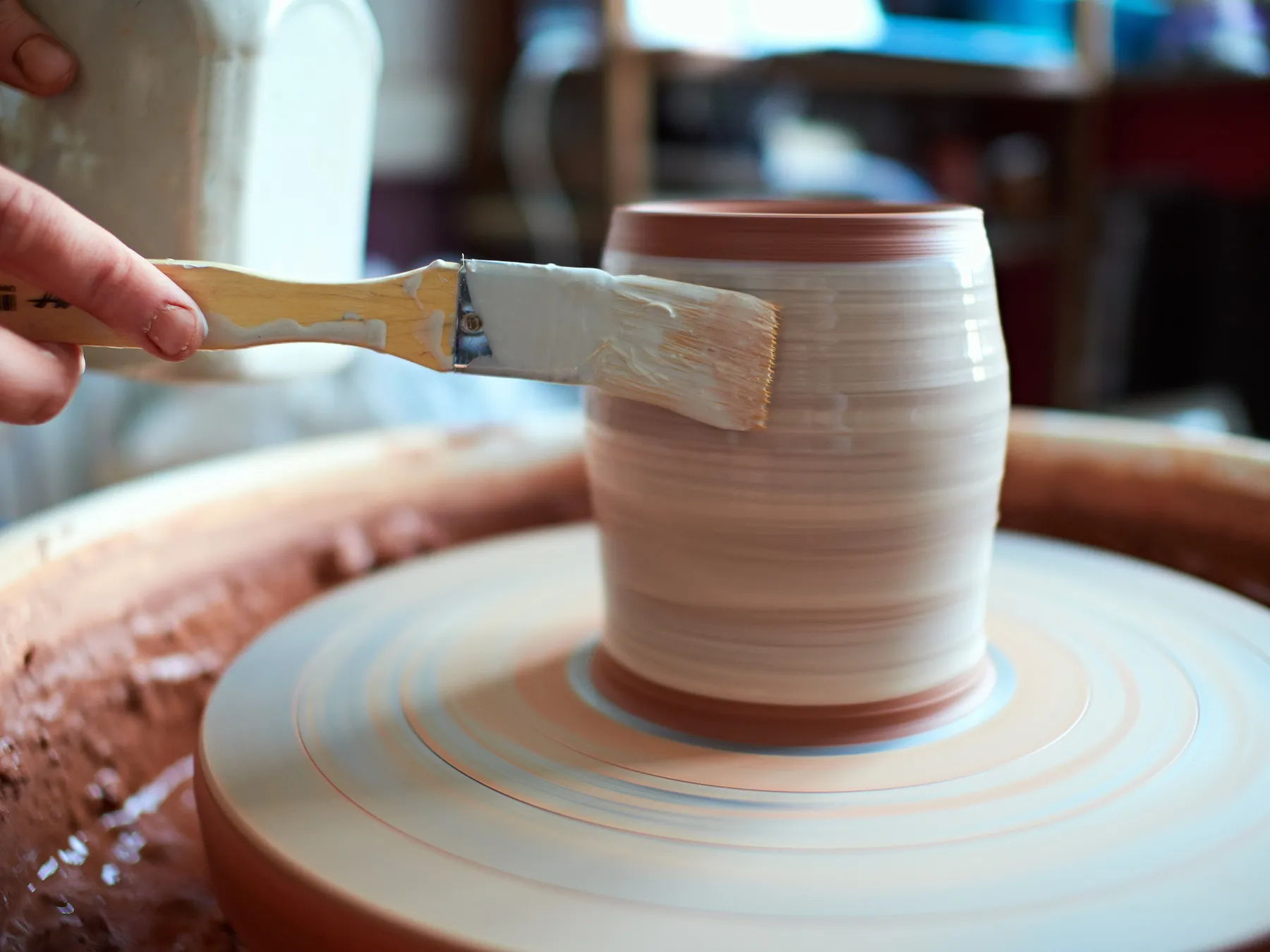
Bamboo Crafts
Bamboo is a versatile material in Vietnamese culture, and the craftsmanship associated with it is both sustainable and beautiful. The material is flexible and used for a range of products like kitchenware. Impressive highlight is the skill in bending and weaving this natural resource. In addition, it is a symbol of resourcefulness, embodying the authentic connection between nature and the people’s life.
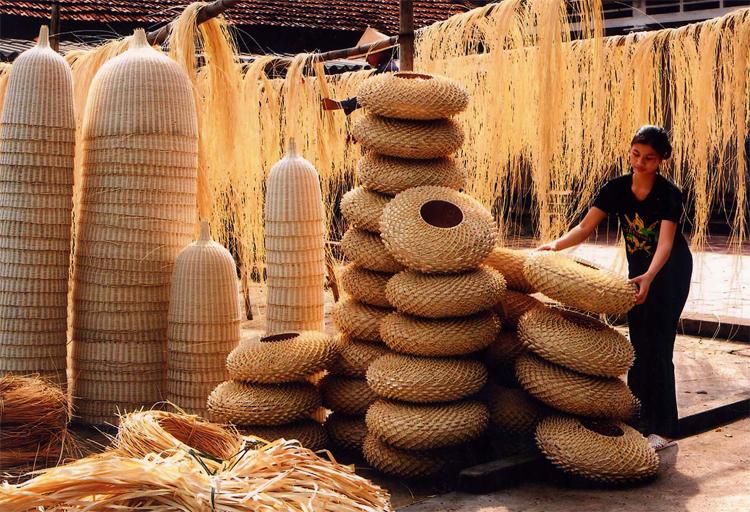
Harvesting and Preparation
Harvesting bamboo is done carefully to ensure the plant can regenerate. The bamboo will be stripped, treated, and cured to prevent decay and increase durability.
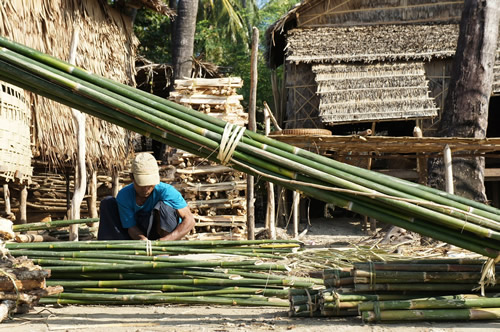
Bending and Weaving
Bamboo can be bent and shaped using various techniques. Traditional methods involve soaking the bamboo in water to soften it, making it pliable for bending.
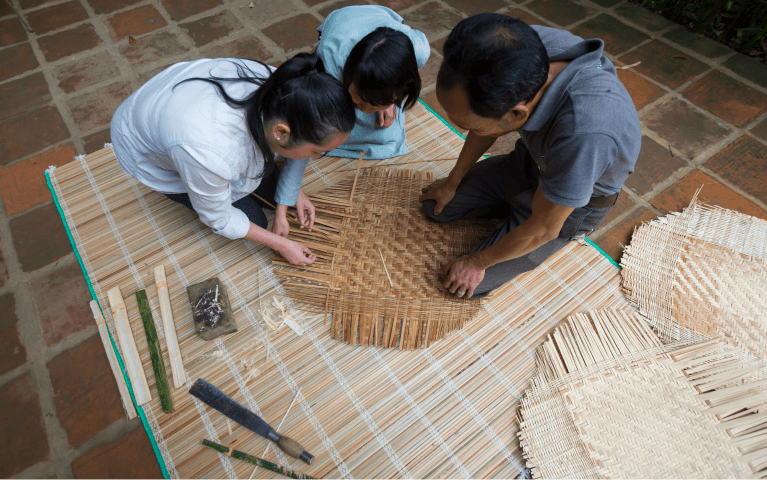
Joinery and Assembly
An impressive way of traditional joinery techniques, which do not require nails or adhesives. Instead, artisans use interlocking joints and binding methods that enhance durability while maintaining the natural aesthetic of the bamboo.
How to Experience Vietnamese Arts and Crafts
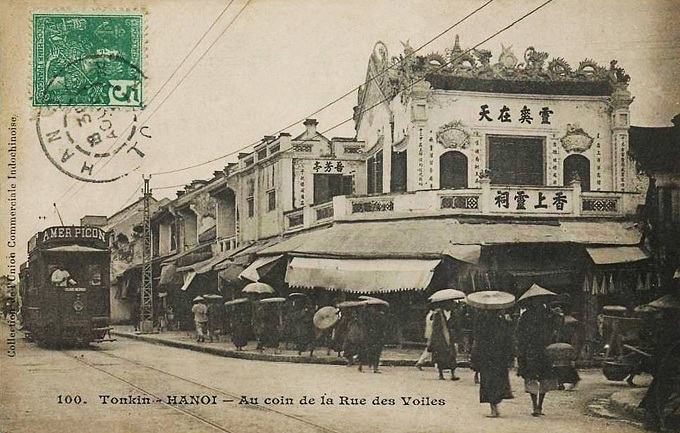
Participating in workshops is the best way to engage in the exquisite world of Vietnamese arts and crafts. Starting with tours that take you to artisans’ villages, such as those in Hoi An and Bat Trang, you gain the opportunity to witness firsthand the processes and techniques employed by master craftsmen. It is a journey to tradition and creativity, offering an authentic glimpse into the artistry that defines Vietnamese culture.
For those seeking a more immersive and luxurious experience, traveling by a luxury train is an excellent alternative. This mode of transportation not only adds a touch of elegance to your journey but also offers curated off-train excursions that enhance your exploration. As you travel with stunning landscapes, the luxury train allows you to visit various stops, where you can engage in curated activities centered around local crafts and traditions. Read more about the journey details here
Engaging with Vietnamese Arts and Crafts: An Essential Factor
In essence, participating in intimate workshops at artisan villages or luxurious train journeys with curated experiences, engaging with Vietnamese arts and crafts offers a unique and enriching adventure. It allows you to connect with local artisans in a meaningful experience. The charm of Vietnamese arts and crafts is diverse and the closest way to understand a nation. Each form of art is a story of heritage, from the delicate beauty of Vietnamese silk embroidery art to the traditional techniques of pottery and bamboo. You are taking home not just souvenirs, but cherished memories of the artistry and culture that define Vietnam.









